Wilson, Edmond Kenneth
Killed in Action 1944-11-21


Birth Date: 1923
Born:
Home: Oshawa, Ontario
Enlistment:
Enlistment Date: Unknown
Service
RCAF
Unit
408 (B) Sqn- Squadron
For Freedom
Base
RAF Linton-on-Ouse
Rank
Pilot Officer
Position
Pilot Officer
Service Numbers
J/92645
Prev: R/152442
Home
 Oshawa, Ontario
Oshawa, Ontario
Target
 Castrop-Rauxel Germany
Castrop-Rauxel Germany
First Burial
 Dusseldorf
Dusseldorf
Pilot Officer Wilson died of his injuries shortly after he was captured and imprisoned in Stalag 6J.
Halifax B.Mk.VII NP810
Bombing Castrop-Rauxel Germany 1944-November-21 to 1944-November-21
(B) Sqn (RCAF) Linton-on-Ouse
Took off from Linton-on-Ouse at 15:20 in Halifax Mark VII (Sqn code: EQ-H Bomber Command) .for an operation against the oil plant at Castrop-Rauxel.
The aircraft was shot down by a night fighter and crashed at Hochdahl Trills, at Erkrath, Nordrhein-Westfalen Germany.
Claim by Hptm Fritz Lau 4/NJG1 - Radevormwald South West of Bochum (MP 1): 4,000m at 19:11. (Nachtjagd Combat Archive 1944 Part 5 - Theo Boiten)
Killed:Pilot Officer Louis Basarab RCAF J/95202 KIA Reichswald Forest War Cemetery Grave: 8. C. 9.Sergeant Herbert Edgar Clark RAF KIA Reichswald Forest War Cemetery Grave 8. C. 5.Flying Officer Lloyd William Frizell RCAF J/39376 KIA Reichswald Forest War Cemetery Grave 8. C. 7.Flying Officer Adelbert Bateman Rowley RCAF J/40054 KIA Reichswald Forest War Cemetery Grave 8. C. 8.Pilot Officer Edmond Kenneth Wilson RCAF J/92645 KIA Reichswald Forest War Cemetery Grave 8. C. 6.
POWs in addition to McPhee:F/Lt Albert Edward Steeves RCAF J/8658 POW Stalag Luft L1 Barth Vogelsang.
Claim by Hptm Fritz Lau 4/NJG1 - Radevormwald South West of Bochum (MP 1): 4,000m at 19:11. (Nachtjagd Combat Archive 1944 Part 5 - Theo Boiten)
Those who perished were initially buried in Dusseldorf North Cemetery. Reinterred 24 October 1946. (CWGC)
Sergeant McPhee was part of Trupp 55. He arrived at Bankau on 20 December 1944.(The Long Road - Oliver Clutton-Brock)Halifax NP810
Handley Page Halifax

The Handley Page Halifax is a British Royal Air Force (RAF) four-engined heavy bomber of the Second World War. It was developed by Handley Page to the same specification as the contemporary twin-engine Avro Manchester.
The Halifax has its origins in the twin-engine HP56 proposal of the late 1930s, produced in response to the British Air Ministry's Specification P.13/36 for a capable medium bomber for "world-wide use." The HP56 was ordered as a backup to the Avro 679, both aircraft being designed to use the underperforming Rolls-Royce Vulture engine. The Handley Page design was altered at the Ministry to a four-engine arrangement powered by the Rolls-Royce Merlin engine; the rival Avro 679 was produced as the twin-engine Avro Manchester which, while regarded as unsuccessful mainly due to the Vulture engine, was a direct predecessor of the famed Avro Lancaster. Both the Lancaster and the Halifax would emerge as capable four-engined strategic bombers, thousands of which would be built and operated by the RAF and several other services during the War.
On 25 October 1939, the Halifax performed its maiden flight, and it entered service with the RAF on 13 November 1940. It quickly became a major component of Bomber Command, performing routine strategic bombing missions against the Axis Powers, many of them at night. Arthur Harris, the Air Officer Commanding-in-Chief of Bomber Command, described the Halifax as inferior to the rival Lancaster (in part due to its smaller payload) though this opinion was not shared by many of the crews that flew it, particularly for the MkIII variant. Nevertheless, production of the Halifax continued until April 1945. During their service with Bomber Command, Halifaxes flew a total of 82,773 operations and dropped 224,207 tons of bombs, while 1,833 aircraft were lost. The Halifax was also flown in large numbers by other Allied and Commonwealth nations, such as the Royal Canadian Air Force (RCAF), Royal Australian Air Force (RAAF), Free French Air Force and Polish forces.Wikipedia
 National Air Force Museum of Canada
National Air Force Museum of Canada
408 (B) Sqn For Freedom ("Goose")
History of the Squadron during World War II (Aircraft: Hampden I, Halifax II & V, Lancaster II, Halifax III & VII, Lancaster X)
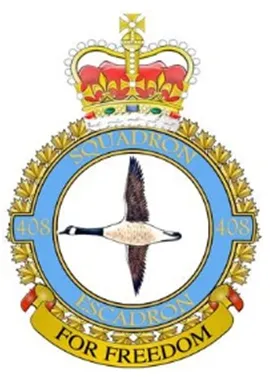
The squadron was the second Canadian bomber squadron to be formed in WWII. It was formed at Lindholme, Yorkshire, UK in June of 1941 as part of Bomber Command No 5 Group, flying Handley Page Hampden Mk I bombers from Syerston, Nottinghamshire, Balderton, Newark and North Luffenham, Rutland. Its squadron code letters were EQ. In September 1942 the squadron was moved to No 4 Group, re-equipping with Halifax Mk II aircraft and flying from Leeming, Yorkshire. On January 1, 1943, by this time equipped with Lancaster Mk II bombers, the squadron joined No. 6 Group (RCAF) and flew from Linton-on-Ouse, Yorkshire from August 27 1943 to the end of WWII. In September 1944 it converted to Halifax Mk III and VII aircraft and flew these for the remainder of hostilities. It was slated to be part of the "Tiger Force" to attack Japan and had re-equipped with Lancaster Mk X aircraft, but the Japanese surrender ended all plans for the Tiger Force and the squadron was disbanded in September 1945 at Greenwood, Nova Scotia .
Altogether, the squadron logged 4610 operational sorties with 25,500 operational hours, in the course of which 11,430 tons of bombs were dropped. 146 aircraft were lost in the course of these operations. Awards included 161 DFC's and 6 bars to DFC, 32 DFM's, 1 MBE and 10 MiD's. Battle Honours were: English Channel and North Sea 1941-43, Baltic 1941-43, Fortress Europe 1941-44, France and Germany 1944-45, Biscay Ports 1941-44, Ruhr 1941-45, Berlin 1943-44, German Ports 1941-45, Normandy 1944, Rhine, Biscay 1942-43. Wikipedia, Moyes, Kostenuk and Griffin
Squadron History (Bomber Command Museum PDF)
Maps for Movements of 408 Squadron 1941-45
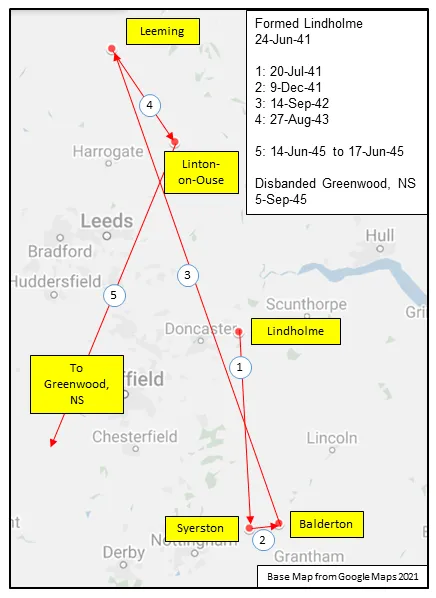 MAP 1: 408 Squadron Movements 1941-45 (right-click on image to display enlarged in new tab) | 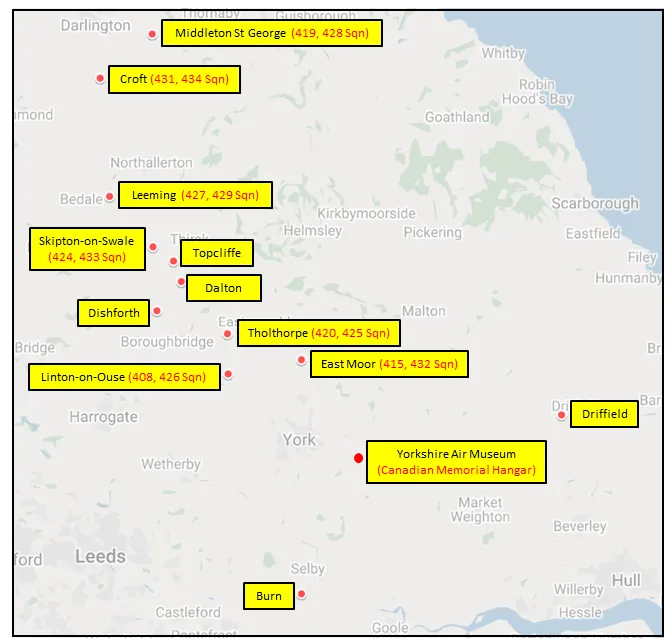 MAP 2: 6 Group Bomber Bases in Durham and Yorkshire 1943-45 |
408 Squadron History Summary
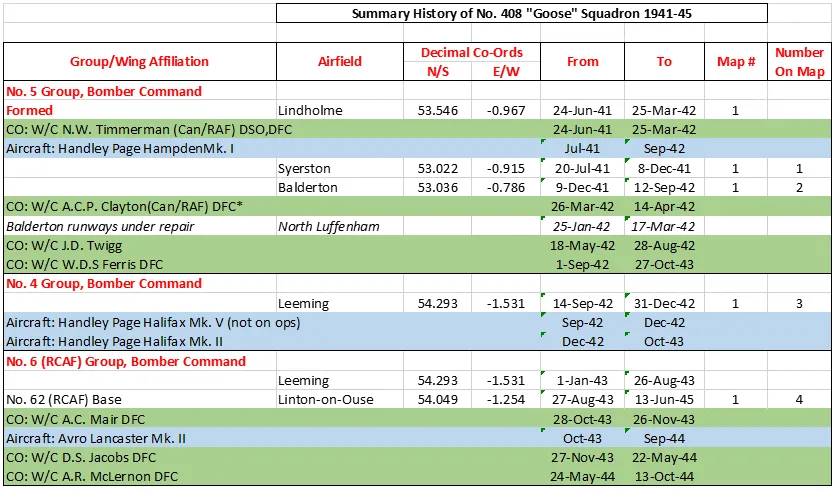
408 Squadron History Summary Page 2

History of the Squadron Post-WWII (Aircraft: Lancaster X, Canso A, Norseman VI, Otter, Dakota III & IV, Boxcar, Silver Star, Hercules, Griffon, Chinook)
On 10 January 1949, the squadron was reformed as 408 (Photographic) Squadron at RCAF Station Rockcliffe, Ontario . Equipped with eight Lancaster Mark X photographic aircraft equipped with SHORAN, a short-range navigational device. It was tasked with the mapping of Canada, specifically the far North. It also flew Canso, Norseman, Otter and Dakota aircraft on this mission, for photography and to maintain the SHORAN stations. Once the task was complete, the squadron was re-designated 408 (Reconnaissance) Squadron and flew Lancasters on Arctic surveillance patrols. In 1964, equipped with the Fairchild C-119G Flying Boxcar, it was again re-designated 408 (Transport Support and Aerial Reconnaissance) Squadron and moved to Rivers, Manitoba. In 1964, the squadron formed a flight of Canadair CT-133 Silver Star aircraft. In 1965, the Boxcars were replaced by CC-130 Hercules aircraft.
On January 1, 1971, 408 Squadron was once again re-activated at Namao in Edmonton, Alberta , as a tactical helicopter squadron (THS) and equipped with CH-135 Twin Huey and CH-136 Kiowa helicopters. Its primary tasking is to provide tactical aviation to the army. The mission includes air mobile assault, air ambulance, air observation, reconnaissance insertions, troop movement, airborne command and control platform and dropping paratroopers. In September 1996, the squadron was re-equipped with CH-146 Griffon helicopters. Personnel from 408 Squadron deployed to Afghanistan nearly continually from 2006 until 2011. Initially forming a Tactical Unmanned Aerial Vehicle (TUAV) detachment using the CU-161 Sperwer. From 2008, 408 members were deployed to Kandahar airfield operating the CH-146 Griffon and CH-147D helicopters as part of the Joint Task Force Afghanistan Air Wing. The primary role of the JTF-A Air Wing was to provide transportation, reconnaissance, armed escort, and fire support to the International Security Assistance Force (ISAF). In July of 2018, 408 THS deployed to Mali as part of Task Force Mali on Operation Presence. In Mali, 408 THS operated the CH-146 Griffon in the armed escort role, providing support to MEDEVAC and utility missions. 408 THS completed its tour in Mali in January of 2019, having participated in 7 medical evacuation missions. It is now co-located with 1 Canadian Mechanized Brigade Group at the 3rd Canadian Division Support Base, Edmonton, Alberta.
link,general,https://www.forfreedom.ca,408 “Goose†Squadron Association
 Canadian Virtual War Memorial
Canadian Virtual War Memorial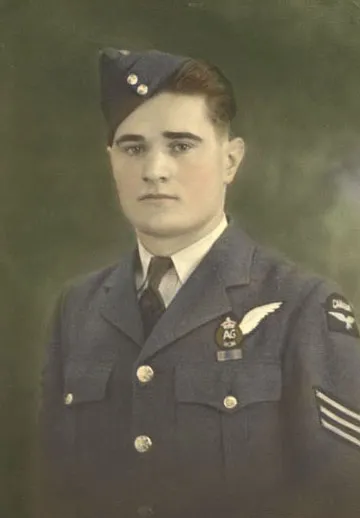


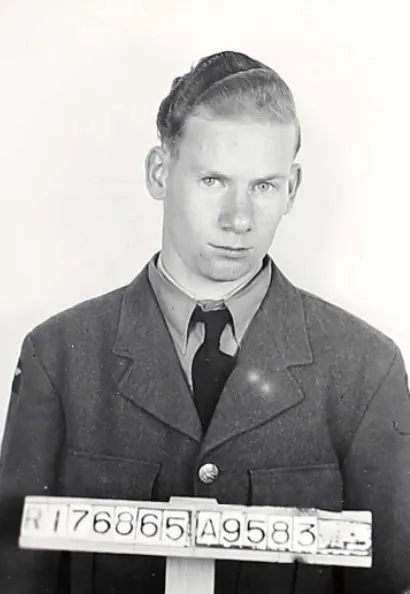
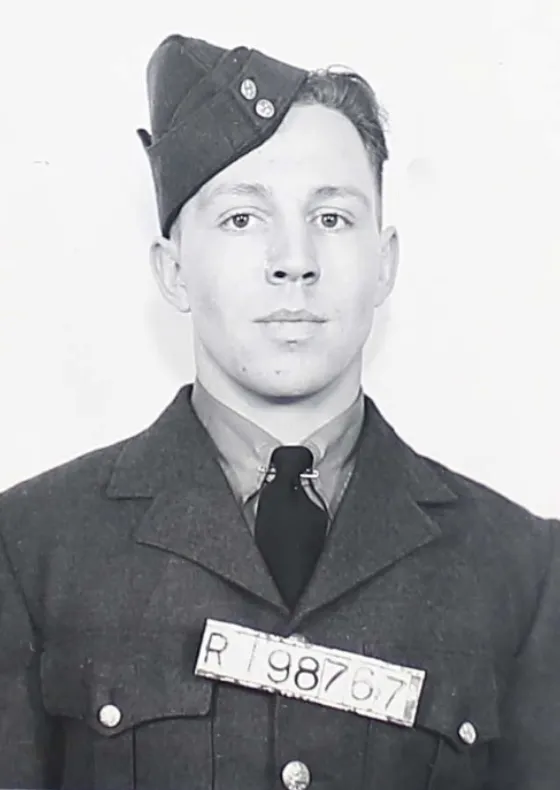
 Halifax Heavy Bomber WWII
Halifax Heavy Bomber WWII Harold A Skaarup Web Page
Harold A Skaarup Web Page Wikipedia Halifax Bomber
Wikipedia Halifax Bomber